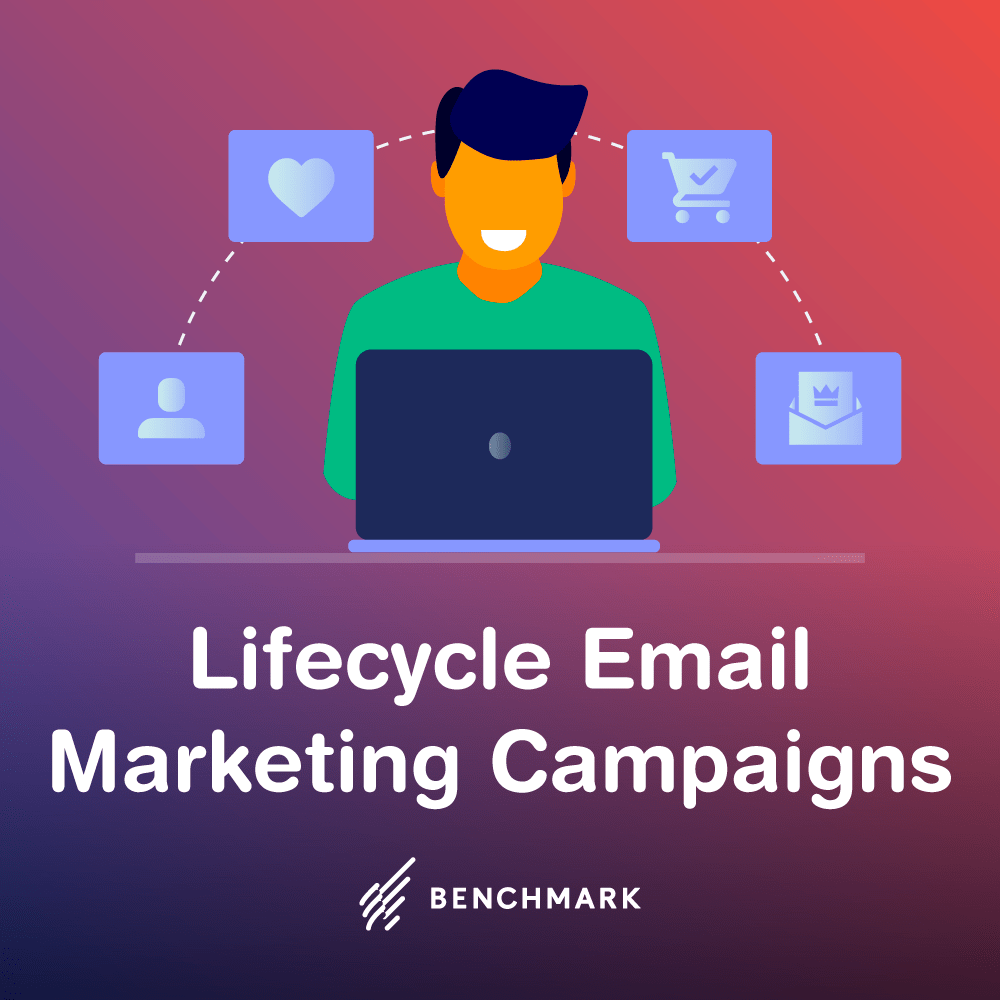Even as we’re in the middle of a pandemic, business, and life, must go on as much as possible. And as your business feels the repercussions right now, you may be looking for tips and tools that can help. Enter: email marketing.
Email marketing is great for a number of things. It helps nurture your leads, provide them with educational content, and helps you stay top of mind with them. And let’s face it, right now you need to stay on their minds.
From crisis email marketing to regular drip campaigns, utilizing email marketing strategies right now is in your best interest. Your prospects are just as worried as you are, and that’s a call for you to be a resource to help them. But first, you need to understand the customer lifecycle and how it informs your approach.
All consumers follow a distinct lifecycle when they go from prospect to lead to customer to brand loyalist. And utilizing what you know about each of the stages of the lifecycle with your email marketing is one of the best ways to get more utility out of every single message that you send.
Lifecycle email marketing refers to product emails that are sent to recipients based on what stage of the customer lifecycle they’re in. To help you do it, we’ll go over the basics of what the customer lifecycle looks like and how you can send emails that better pertain to each stage — and why it’s so beneficial to do so.
Email Marketing Throughout the Stages of the Customer Lifecycle
Every company — and every customer — is unique. That being said, we can learn a lot from general marketing psychology about how the basic customer lifecycle operates.
Depending on how your business uses and understands the customer lifecycle, you may break it down into three, four, or five stages, and what you call each of these stages may vary. For our purposes here, we’ve divided the customer lifecycle into five stages, each of which depends on particular marketing formats and techniques to help guide leads onward. Let’s dive in.
Stage 1: Awareness
Most customers start their lifecycle here, at the awareness stage. At this point, customers are aware that they have a need and are actively looking for a solution. The job for you as a marketer then is to make your brand and product known through marketing strategies that put you in front of prospects and keep your name top of mind.
Notably, email marketing isn’t really going to be the core of your strategy here. Since prospects in the awareness stage of the customer lifecycle haven’t established much (if any) of a connection with your brand yet, they probably haven’t signed up for or opted-in to your emails. So instead, you need to diversify with tactics that put your brand in front of them.
Try: Paid and organic online advertising, social media, guest posts, and shareable graphics and videos.
Stage 2: Consideration
At the second stage of the customer lifecycle, consumers have narrowed it down to a few possible solutions and are comparing and contrasting to weigh their options. Building brand awareness was necessary for getting you into this favorable group in the first place, but now the job is to position yourself as the right and final choice.
Your marketing strategy at this stage should be focused on conveying how and why you are the solution to your customers’ needs and/or problems. Because initial interest has already been established, you’ll have the benefit of email marketing to spur your effort — and customer behavior data to drive it even further.
Try: Targeted email marketing that’s personalized based on a customer’s site activity. If they’re circling back through the cycle again, use their previous purchase history here too.
Stage 3: Decision
Customers at the decision stage of the lifecycle are ready to pull the trigger on a purchase. Whether it’s your product or not that they buy depends on how good of a job you do nurturing them with email marketing.
Your marketing here is going to be pretty specific since you’ve done the general work to get a customer this far already. The goal is to provide content that makes their purchasing decision easier, removing any doubts, and using incentives to inspire a purchase.
Try: Conversion-driven emails like cart abandonment emails, promos, and discounts for a first-time purchase.
Stage 4: Retention
Think all of your work is done once a customer has bought your product? Not quite. There’s way more to be gained from retaining your existing customers than spending big on bringing in new ones. Customer retention is one of the most profitable marketing strategies that you can focus on.
Just because a customer has made a purchase doesn’t mean that they’re not still interested in what you have to say. Marketing materials, sales, offers, content, discounts, and so on will strengthen brand loyalty and keep a customer coming back.
Try: Personalized emails and newsletters with other product recommendations, loyalty program offers, incentives, and links to helpful content that helps them make the most of their purchase.
Stage 5: Advocacy
Satisfied customers can go on to become brand advocates, recommending your company to their peers through vehicles like social media, review sites, and face-to-face communications. So how do you get them to this point? Aside from just having a great product, you need to continue to engage your customers with marketing that maximizes your customer service and keeps the relationship going strong.
Try: Referral program incentives and personalized messages to VIP customers.
The email marketing choices you make at each stage of the customer lifecycle will play a big role in how often prospects turn into brand loyalists, and ultimately, how successful you are in meeting your sales goals quarter after quarter. Is your strategy up to speed?

